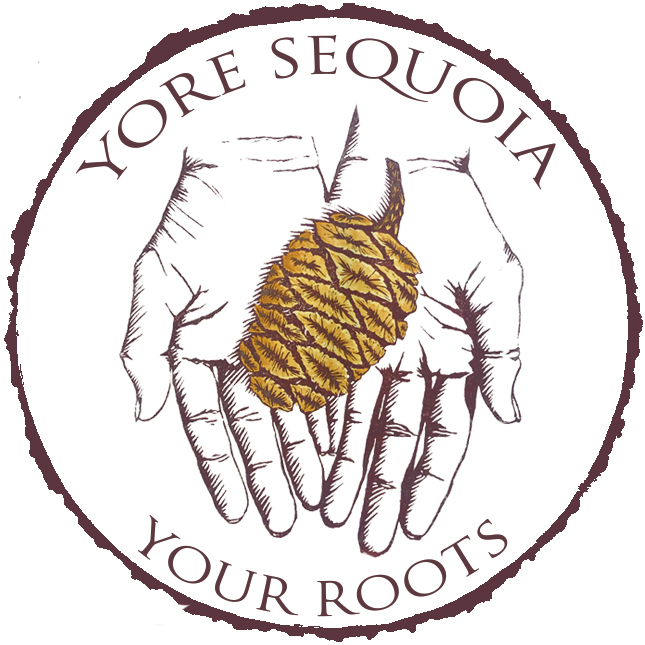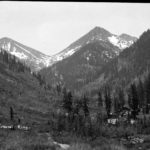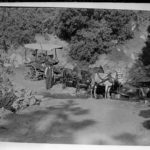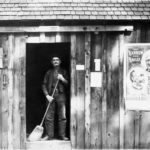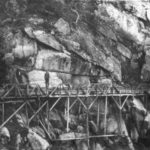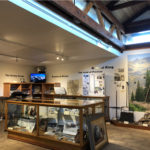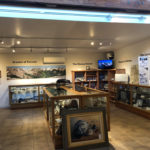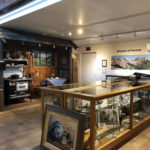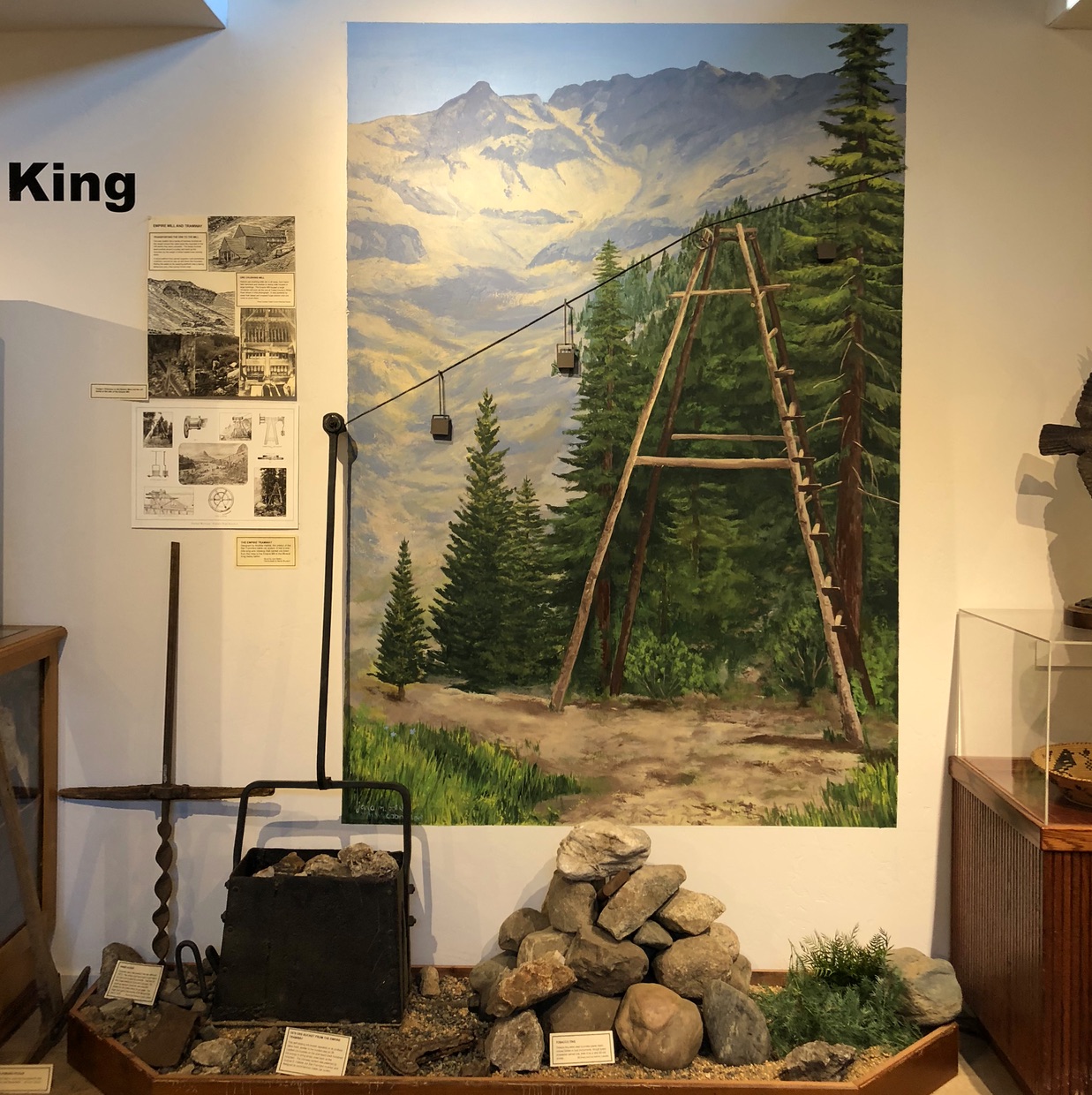
The Mineral King Room in the Three Rivers Historical Museum displays artifacts and murals that tell the history of Mineral King and the impact it has had–both locally and nationally.
This article is a compilation of two articles written by John and Sarah Elliott for 3RNews in January 2017, with editorial an editorial update in April 2021.
The Mineral King Preservation Society, a nonprofit organization founded in 1986, curates the Mineral King room, which house artifacts, documents, photographs, and so much more that relate to the fascinating, sometimes tumultuous, history of the Mineral King valley. This history had an significant impact on the region and the nation.
The Mineral King Room is located at the Three Rivers Historical Museum, 42268 Sierra Drive. When there is no pandemic or other intervening force, it is open daily from 9 a.m. to 3 p.m. and admission is free.
Part 1: Mineral King
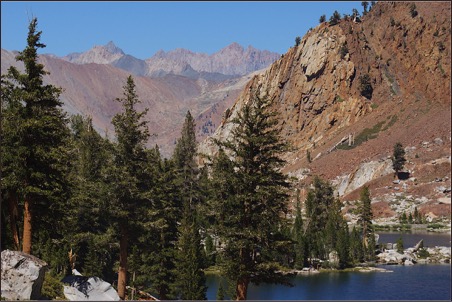 Mineral King is located 25 miles and 90 minutes from Highway 198 in Three Rivers via the windy, narrow, sometimes hair-raising Mineral King Road. The road is open from the Memorial Day weekend into October. It is closed nine miles up during the winter months.
Mineral King is located 25 miles and 90 minutes from Highway 198 in Three Rivers via the windy, narrow, sometimes hair-raising Mineral King Road. The road is open from the Memorial Day weekend into October. It is closed nine miles up during the winter months.
From geologic formations to indigenous peoples, mining to summer recreation, U.S. Forest Service to National Park Service, lumber industry to cattle-grazing and stock-packing, national game refuge to Walt Disney’s ski resort to John Krebs Wilderness, Mineral King has an abundance of stories to tell. And the history of Three Rivers and Mineral King is intertwined and has been for 150 years.
The first road through Three Rivers led to Mineral King. Three Rivers was a way station and stage stop for the miners and prospectors, lumbermen, stockmen, and others who were searching for riches or to simply eke out a living in the alpine valley. From here, it could take another arduous two days of travel to reach this high-country destination.
It is difficult to overstate the role of Mineral King in shaping both regional and national history.
The Mineral King mining rush was instrumental in development of the nation’s precious metal monetization policies. The mining rush orchestrators directly influenced the market value of silver at a time when the world was transitioning to the gold standard and reeling under the effects of the first global depression.
The woman’s enfranchisement movement coalesced there when women prospected and claimed mines decades before they did so elsewhere, and when woman voted in the mining district elections 35 years before gaining the right to vote in California and 44 years before gaining that right nationally. In doing so, they tested the new Mining Law of 1872 and paved the way for women to own mines throughout the United States.
The Mineral King Road provided the initial access to Sequoia National Park when it was created, and hosted the 4th Cavalry troops assigned to protect the new park from livestock. Mineral King had a substantial influence on the development of National Forest and National Park livestock policies.
At the end of the 19th century, the waters and giant sequoias of Mineral King were harvested to provide the first electrical power to the great valley, power that was essential to irrigating crops and transporting them to market. This power helped establish the San Joaquin Valley as “the bread basket of the world.”
In the 1960s and 1970s Mineral King was the center of a battle between environmentalists and the federal government and Walt Disney Corporation, which proposed to build a year-round resort there. The legal outcomes have helped guide and motivate the forces for conservation throughout the nation and the world.
Today, the Mineral King area includes several historic cabin communities, including Silver City and Cabin Cove. Most of the structures date to the late 19th and early 20th centuries. The settlements as a whole are referred to as the “Mineral King Road Cultural Landscape District,” which was added to the National Register of Historic Places in 2003.
Ora Kay Peterson, who was a founder in 1986 and executive director of MKPS until her death in 2010, realized the importance of collecting artifacts and archives while sharing the history of Mineral King with the public. In 1987, a MKPS display of some of its earliest museum-quality pieces became part of a display that for many years was housed in the Mineral King Ranger Station.
In the late 1980s and throughout the 1990s, MKPS gathered historical information relating to Mineral King and assisted the National Park Service in finding a way to preserve the cabin community and the district’s cultural resources. That landmark research and grassroots movement culminated in 2003 with the official National Register of Historic Places designation of the Mineral King Road Cultural Landscape.
The Mineral King Room features rotating displays that will highlight items from the MKPS collection that will help the public and especially those whose lives have been touched by this magical place to better understand the remarkable history and its preservation.
The displays tell the tale of prehistoric occupation, the discovery of Mineral King by pioneer settlers, the road-building, the mining, the cabins, the trails, the dams, the Disney era, and how the area became a part of Sequoia National Park. Mineral King’s historic structures and sites include mines and mills from the 1870s, a road constructed in 1879, lumbering sites (ca. 1870-1890), Mt. Whitney Power Company dams (1904-1906), and the cabins, which date from 1895 to the 1950s.
Part 3: Mineral King Room History
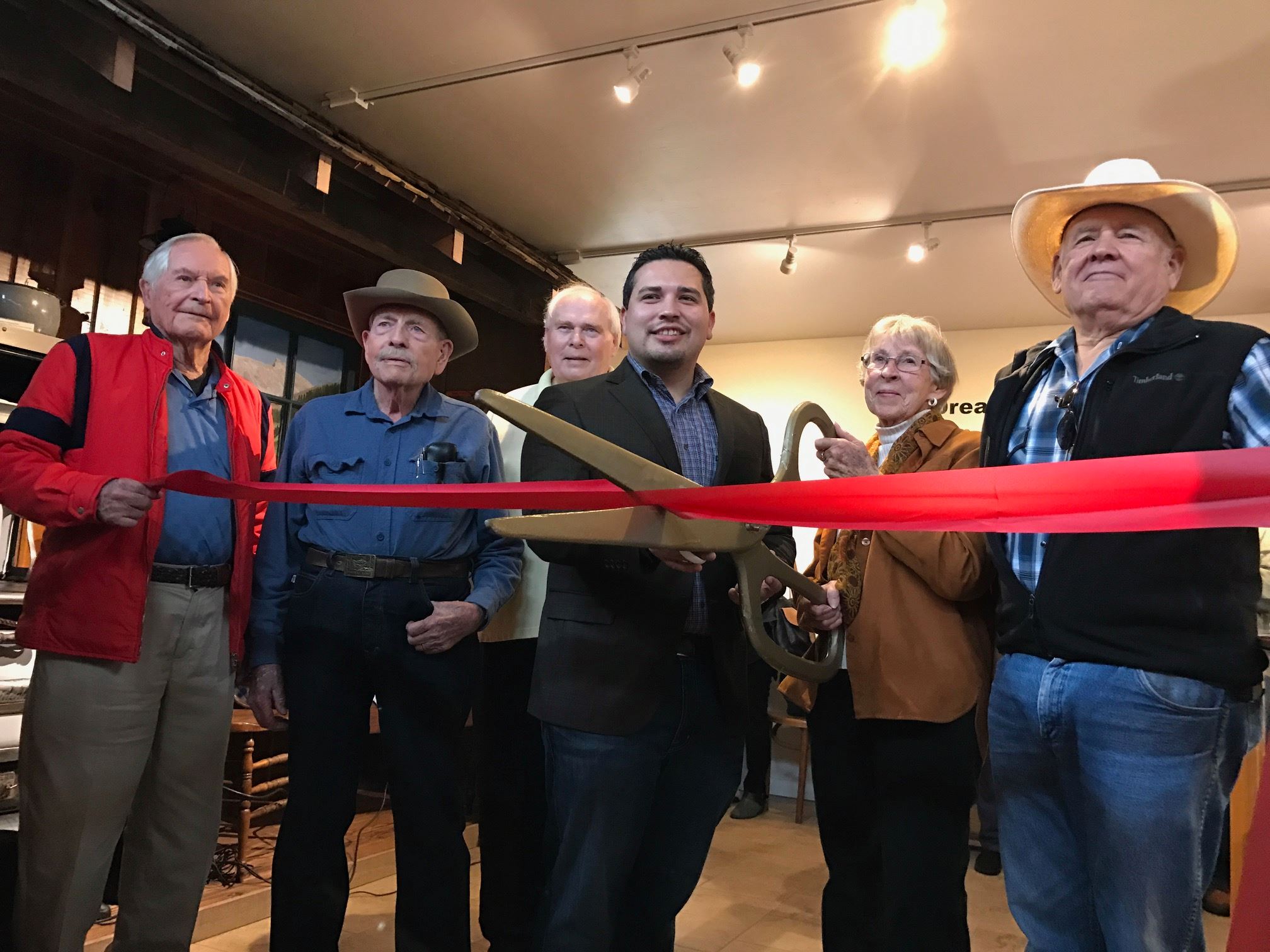
From humble beginnings more than 30 years ago, the Mineral King Room is a dream that has become a reality.
On Sunday, 22 January 2017, the Mineral King Preservation Society (MKPS) and the Three Rivers Historical Society (TRHS), along with a throng of celebrants, cut the ceremonial ribbon officially opening the Mineral King Room. The Mineral King Room, now the home for archives and artifacts that were donated to and collected by MKPS since its inception in 1986, became recently a joint undertaking of MKPS and the local Historical Society.
Key members of both historical groups were joined for the ribbon cutting by Kuyler Crocker, District 1 supervisor, and Bob Hicks, a former agent for Walt Disney, who donated his personal archives detailing the Disney Company’s unsuccessful efforts (1965-1978) to transform Mineral King from a national forest game preserve to world-class ski resort.
Louise Jackson of Three Rivers, a Crowley cabin descendant and among the founding members of MKPS, said it has been her dream for the past 16 years to see the MK Room become a reality in Three Rivers.
“Creating a place where the public could learn about the colorful history of Mineral King was a big part of why I moved to Three Rivers,” Jackson explained.
Jackson, who more than any individual is responsible for the getting the MK Room opened, said she could not have done it without the help of Tom Marshall and his vision as the president of TRHS.
“The Room is open now, although at times I seriously wondered if this project would ever get to this point,” said Louise. “For me, it is truly a labor of love, and this opening is only the beginning. There is so much more than needs to be done.”
Louise’s brother, Bruce Jackson, who donated the cost of the construction ($130,000), and a host of others who earmarked funds and labor for the building of the MK Room, were instrumental in the Three Rivers museum’s annex becoming a reality.
In October 2015, construction was started by Pete Crandall, general contractor; it was completed in the fall of 2016. Donations by Hicks and many others will make it possible to maintain the 768-square-foot room and also the rest of the MKPS collection, which is housed on the Three Rivers site in a climate-controlled storage unit.
